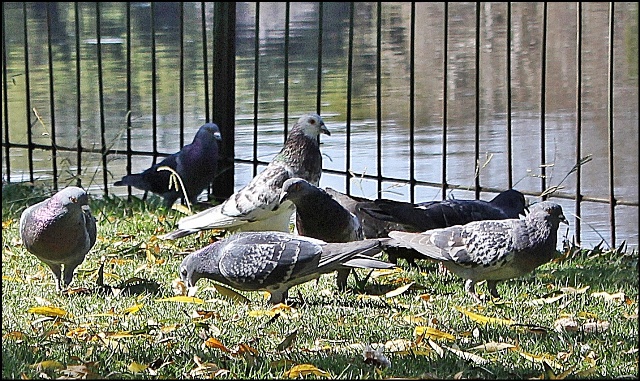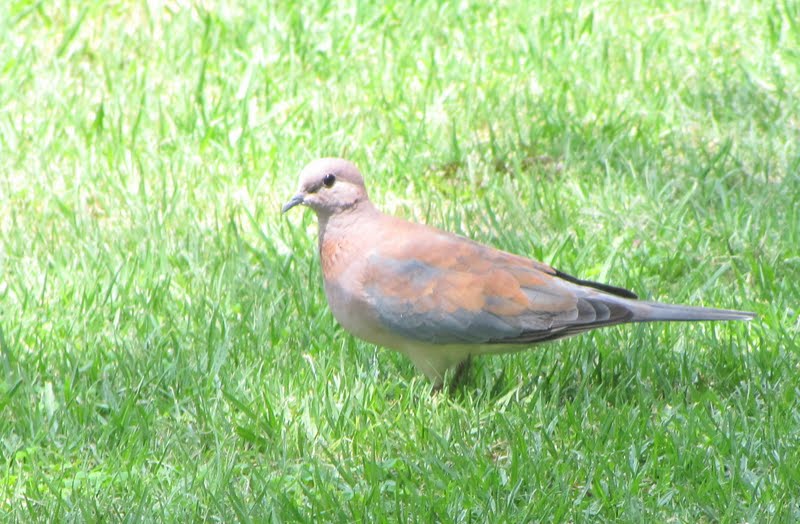Once considered a nuisance and actively exterminated, the
Rock Dove or Rock Pigeon (Tuinduif) (
Columba livia) is now one of the most popular and familiar urban birds in the world. Rock Doves are often simply referred to as the "pigeon". The species includes the domestic pigeon (including the fancy pigeon), and escaped domestic pigeons have given rise to feral populations around the world. Fossil evidence suggests the Rock Dove originated in southern Asia and skeletal remains unearthed in Israel confirm their existence there for at least three hundred thousand years. However, this species has such a long history with humans that it is impossible to tell exactly where the species' original range was
They have a wide range of color and marking variations due to escaped domestic birds and fancy stock breeding. Typical Rock Doves are pale grey with two black bars on each wing, and an iridescent neck that reflects blue, green and purple, although domestic and feral pigeons are very variable in colour and pattern. Eyes and legs are orange or reddish. There are few visible differences between males and females. Additional color variations include white, brown, tan or mottled birds.
Rock pigeons are common throughout the world. These birds thrive in human habitats and are most populous in large cities but can also be found in suburban and rural locations. They do not migrate.
Because they are so used to humans, they often seem semi-tame and will readily approach passersby for food. Large flocks of pigeons are constantly foraging or birds will roost in close contact with one another. They are very agile fliers that can reach speeds up to 85 miles per hour with their tapered, falcon-like wings.
Rock pigeons can brood at any time of year and both the male and female parents will tend the eggs during the 17-19 day incubation period. The fledgling phase lasts 25-35 days and for the first few days both parents will feed the young birds with regurgitated crop milk. One brood consists of 1-2 eggs, and pigeons can raise five or more broods per year.














 7.11.2009
7.11.2009 5.3.2008
5.3.2008